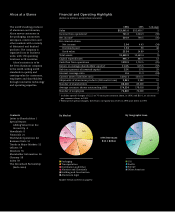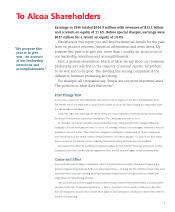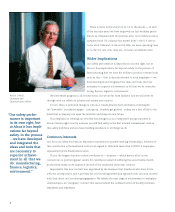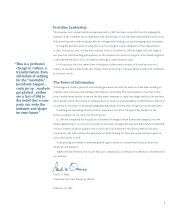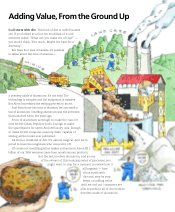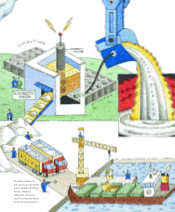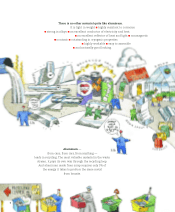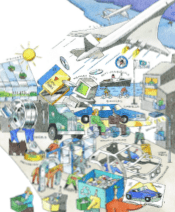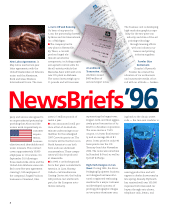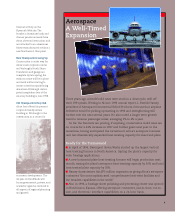Alcoa 1996 Annual Report Download - page 12
Download and view the complete annual report
Please find page 12 of the 1996 Alcoa annual report below. You can navigate through the pages in the report by either clicking on the pages listed below, or by using the keyword search tool below to find specific information within the annual report.
10
$600 a month in cost savings
because they last longer. For
additional savings and cleaner
gloves, team members decided
to wash the gloves in-house
instead of sending them out
for cleaning.
Mining and Environment.
Alcoa of Australia won special
recognition for a computer-
based system that integrates
mining with environmental
management. Their Geological
Information System (GIS) helps
engineers and scientists to pro-
duce accurate mine plans that
consider biological diversity,
land use value, and water qual-
ity. The system also safeguards
against the spread of dieback
disease, a fun-
gal infestation
that attacks a
number of
plants in the
jarrah forest,
including the
jarrah trees themselves.
Development of GIS earned
the 1996 Minerals Operations
Sector Award from the Western
Australia Department of
Minerals and Energy.
Alcoa Scientists Help
Looking for
‘Lady Lindy’
Amelia Earhart was a military nurse during World War I and
a social worker for six years after the war. And then, over the
objections of her family, she learned to fly.
Newspapers dubbed her “Lady Lindy” when she made a solo
crossing of the Atlantic in 1932. Five years later, accompanied
by Lt. Comdr. Fred Noonan, she began a round-the-world trip
in a twin-engine Lockheed Electra. After completing two-thirds
of the journey, the plane vanished somewhere near Howland
Island in the South Pacific.
Still a Mystery
Thirty-five books, five films, and uncounted articles have
speculated about where and how Amelia’s plane went down.
Now, investigator Richard Gillespie and 14 others from
The International Group for Historic Aircraft Recovery —
along with a PBS film crew — are searching an uninhabited
atoll called Nikumaroro Island in the Phoenix group, 2,000
miles from Honolulu.
The Right Kind of Metal
Gillespie has found aluminum fragments there on three
previous trips. Recently he brought several of those pieces to
scientists at Alcoa Technical Center, asking if they could
identify the type of metal — and whether it could have been
part of the plane.
Results of their tests: the specimens appear to be Alcoa
Alclad aluminum, the same type of metal used in construc-
tion of the Electra in the 1930s. Stay tuned.
All Clear at Vancouver. The
Environmental Protection
Agency (EPA) deleted the Alcoa
Vancouver Potliner Superfund
site from the National Priorities
List, which identifies the most
serious hazardous waste sites.
The EPA and Washington state
Department of Ecology (DOE)
said the Alcoa site was assigned
“No Further Action Required”
status. This de-listing clears the
way for redevelopment of some
prime industrial property. An
EPA official said, “Cleanup work
at Vancouver was handled
entirely by Alcoa, with over-
sight by the DOE. We commend
Alcoa’s job of cleaning this site.”
Cut Costs, Not Hands. A safety
project team chose Kevlar
gloves for the Slit and Pack
Department at Tennessee
Operations to help eliminate
the hand cuts that sometime
occur when using cotton
gloves. Though they cost five
times more than cotton, the
Kevlar gloves are generating


